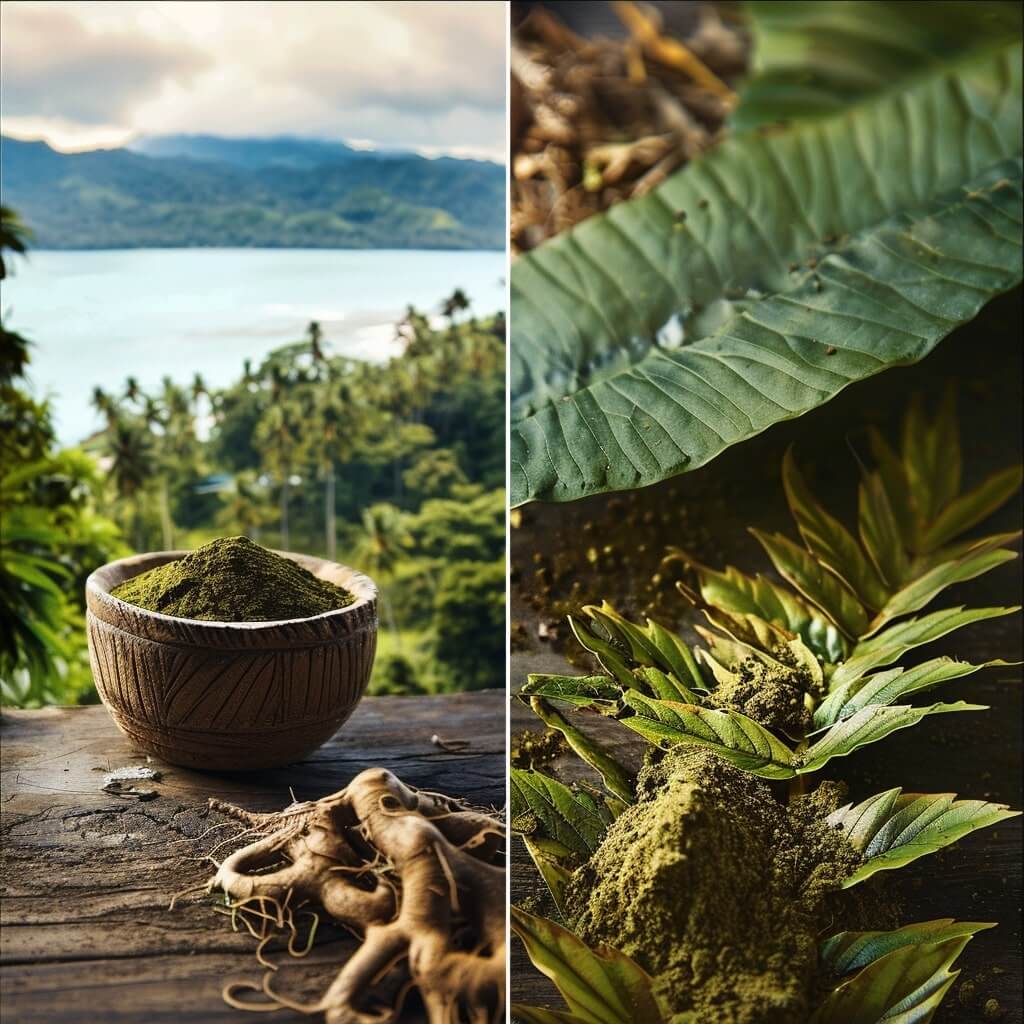

Why Trust Authentic Kratom
- 10 years of experience in the kratom industry
- High expertise confirmed by a partnership with the American Kratom Association
- Only lab-tested and GMP-qualified products
- Reviewed and trusted by thousands of customers
The chances are, you have at least heard of Kratom and Kava. Both of these natural substances have become incredibly popular in America over the last decade or so, with people of all age groups and demographics deciding over kava vs kratom for a whole host of reasons.
However, both substances are very different. You might be wondering, though, what is kava and kratom, and, more importantly, is kava and kratom the same thing? Let's take a look.
Disclaimer: This content is for informational purposes only. It does not offer medical advice or promote the use of kratom. Always consult a healthcare professional for guidance tailored to your specific situation.
Kratom vs Kava
Among those who might not be unfamiliar, kratom and kava are commonly and mistakenly viewed as the same thing, owing to the fact that they are usually sold side by side in various specialty stores.
This couldn't be further from the truth - both are wildly different, and both have distinct origins, cultural significance, and physiological effects on users.
First, let's explore the topic of what is kava and kratom, and, more importantly, what is the kava vs kratom feeling, and how do they contrast?
What Is Kratom?
Many people are often surprised to learn that Kratom hails from Southeast Asia, mostly in the countries of Thailand, Vietnam, and Malaysia.
Locals in these exotic regions chew the Kratom leaves for energy and to alleviate discomfort and have been doing so for centuries. While kratom has an ancient history in certain Asian countries, it is only really during the last 20 years that kratom has made its way over to America. In the process, kratom has become quite popular, where it is processed and sold mostly in powder, capsule, or liquid extract form.
What Does Kratom Do?
People can try kratom for both recreational relaxation and medicinal purposes, aiming to enhance their physical and mental well-being, although all evidence of this is purely anecdotal.
Various kratom strains are available based on color, including red, green, white, and yellow. Each strain is reported to offer different effects.
What Is Kava?
Known scientifically as Piper Methysticum, kava is a plant that hails from the opposite side of the world to kratom, mostly native to the Pacific Islands, including Hawaii, Fiji, and Vanuatu. Unlike kratom, kava is not related to the coffee family and instead comes from the pepper family.
For centuries, Pacific Islanders have used kava roots in social ceremonies and for their overall reported calming properties. Traditionally, the roots are ground and mixed with water to create a drink, although in Western countries, kava is available in various other forms, including teas, capsules, and tinctures.
What Does Kava Do?
Kava works differently from kratom, targeting the nervous system and potentially influencing the brain's neurotransmitters - those chemicals that nerves release to communicate instructions and report with each other.
It has become a popular choice for social gatherings in Pacific cultures and is now commonly taken by people of all age groups in America. However, we should note that while some users find kava beneficial for managing stress and improving mood, the effects can vary widely among different people, and its long-term use is a subject of debate and ongoing study.
What Is the Main Difference Between Kava and Kratom?
In comparing kava and kratom as alternatives, the most glaring difference is that kratom is known for its alkaloid content, which impacts the opioid systems in the brain.
And what about the difference between kava and kratom in terms of biological reaction? Well, kava demonstrates completely different pharmacological properties. Its active components - a natural substance known as kavalactones - mainly interact with the limbic system, which is the brain's center for emotion and behavior.
The effects would be the most glaring difference, however. Kava is reported to deliver a more profound feeling that encompasses the whole body. Kratom is said to be far more uplifting and energetic unless taking certain red kratom strains.
This distinction is the main difference between kava and kratom.
Kratom vs Kava - Differences in Legalities
There are some notable kratom vs kava differences when it comes to the legality of both substances. Kratom is subject to increasing FDA regulation and bans in some states, while Kava generally is not. Concerns over its safety led to a prohibition on its import in the United States in 2014, although most kratom users would argue these allegations are unsound and unfair.
In several states, including Indiana, Tennessee, Vermont, and Wyoming, the use of Kratom is actually illegal. Other states like Florida and New Jersey are awaiting further studies before passing any legislation. In all other states, kratom is legal without issue.
Interestingly, Kratom has recently become legal once again in Thailand, a country that is known for its strict drug laws and harsh penalties. The original ban - enforced over 70 years ago - was initially implemented to protect tax revenues for the Thai government for opium imports.
In contrast, Kava is completely legal in the United States for use as a natural dietary supplement.
Wrap Up
So, is kava like kratom? Not really - it is a nuanced answer. While both kratom and kava are often taken in the same circles, the differences between the two substances are quite different.
Choose Authentic Kratom Store
Would you like to discover popular kratom strains for yourself? Try Authentic Kratom - our premium crushed leaf Kratom comes straight from our partner farmers in Thailand and Malaysia and is the best kratom you will find anywhere.


